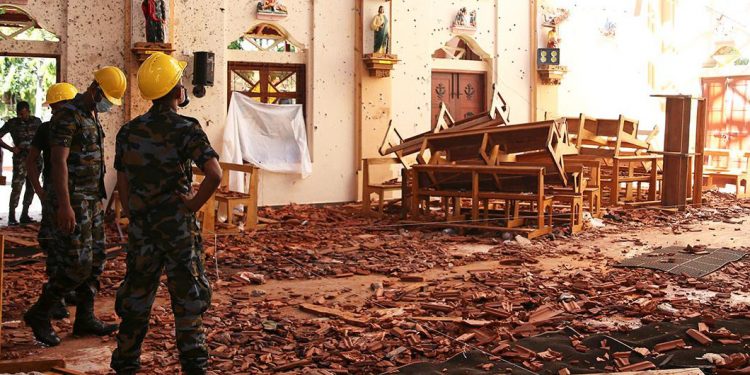Colombo: The dramatic revision of the death toll in Sri Lanka’s Easter bombings, which has been cut by more than 100, is a grim indicator of the power of the deadly blasts. The force of the explosions so badly mutilated bodies that parts of victims were wrongly collated and identified in the initial confusion, officials said here Friday
“Many of the victims were badly mutilated… There was double counting,” the health ministry said in explaining the new death toll of 253, down from 359 announced, Wednesday.
Health Ministry director general Anil Jasinghe said the ‘very complex nature of the human remains’ made it hard for forensic experts to initially compile an accurate toll.
“In explosions like this, bodies get badly mutilated. It is not always possible to have complete bodies,” said Jasinghe. “This is why it was initially difficult to arrive at a precise toll,” he added.
The sheer force of the suicide bombings at three churches and three hotels is clear from the damage sustained by the targeted buildings.
At St Sebastian’s Church in Negombo, north of the capital, the explosion was so powerful it brought down much of the roof, showering the congregation in roof tiles, and sheared the plaster off walls.
Authorities are still investigating details on the bombs used in the six attacks, which were followed by two more explosions as police raided addresses searching for suspects. So far, they believe that the attackers did not use C4, the explosive that was the weapon of choice for bombings carried out by the country’s Tamil militants during their deadly decades-long insurgency, which ended in 2009.
But the precise nature of the explosives and the size of the bombs are still being worked out. One clue lies in images of one of the men believed to be among the attackers, who was captured on CCTV just before he entered St Sebastians. He is seen carrying what appears to be a full and heavy backpack, before entering the church seconds before a massive blast.
Sources close to the investigation told this agency that they believe the attackers may have used an explosive less powerful than C4, but packed their bombs with larger quantities of it to render their weapons more deadly.
The result was devastating, and Jasinghe said it had taken its toll even on the experienced staff of the country’s forensic morgue facilities. “It has been a very grim task, even for the staff. They found it very difficult to identify the bodies,” he said.






































